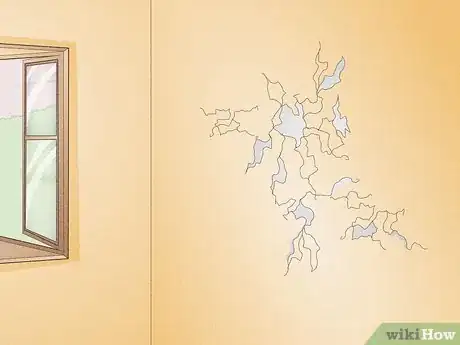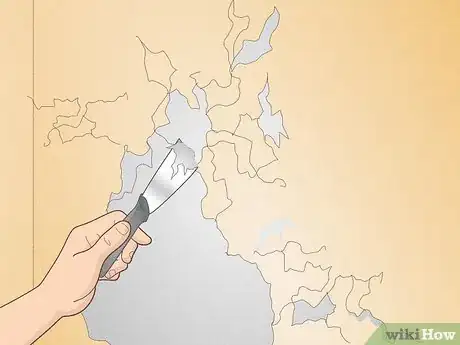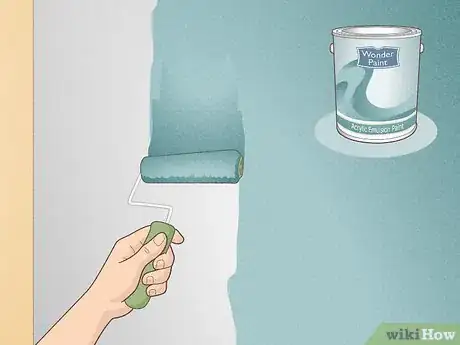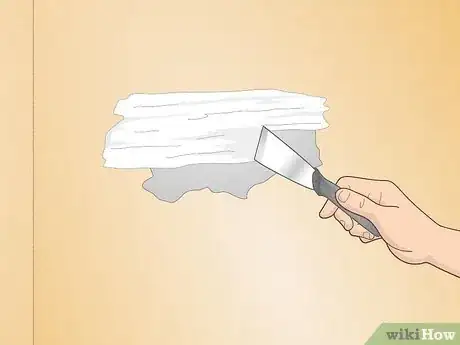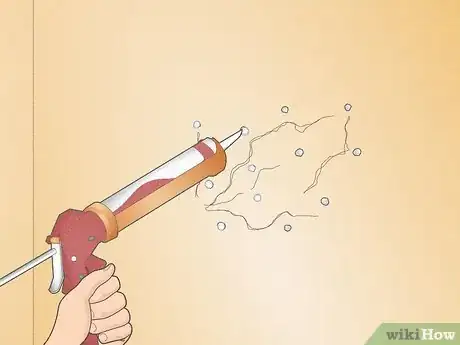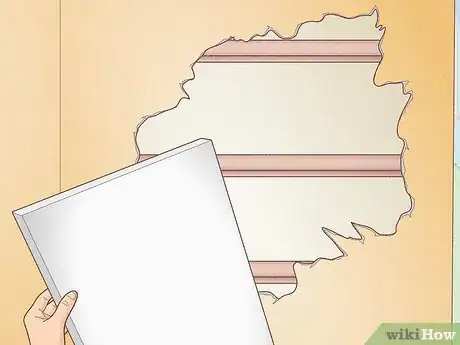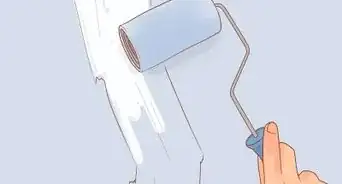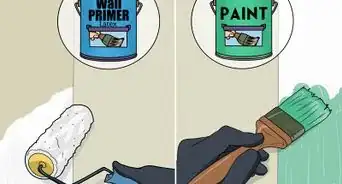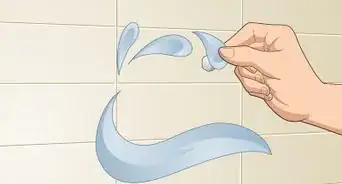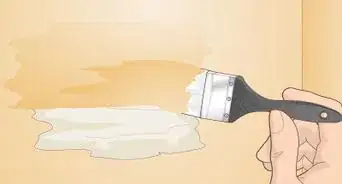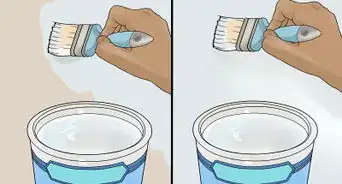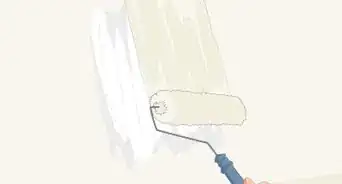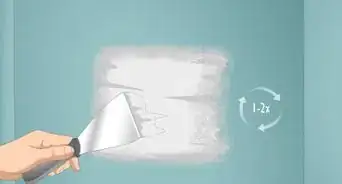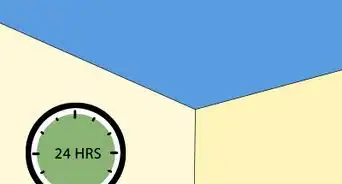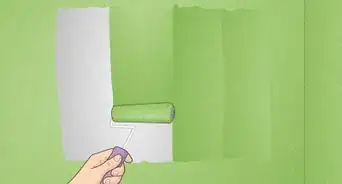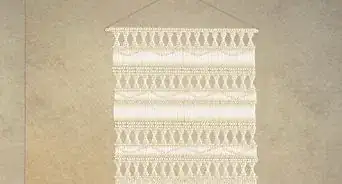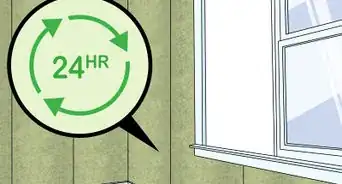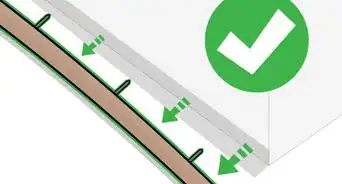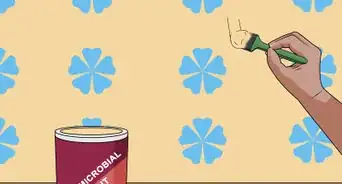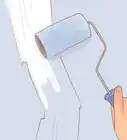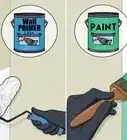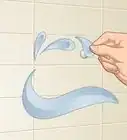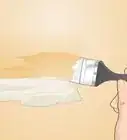This article was co-authored by Nick Yahoodain. Nick Yahoodain is a General Contractor and the CEO of Advanced Builders & Contractors in Los Angeles, California. With over 16 years of experience, Nick specializes in large residential projects such as new construction, developments, major renovations, additions, and hillside construction. Advanced Builders & Contractors is a member of the BBB, is licensed by the Contractors State License Board, and is fully bonded and insured. Advanced Builders & Contractors has been featured on NBC News, Elle Decor, Architectural Digest, and Voyage LA.
There are 8 references cited in this article, which can be found at the bottom of the page.
This article has been viewed 50,381 times.
If your home or business was built before the 1950s or constructed using traditional methods, there’s a good chance it has plaster walls. With time, the paint or top coat of plaster can start to come loose. Fortunately, there are some relatively simple ways you can repair your plaster walls if you notice peeling or other wear and tear. We’ve put together this handy Q and A article to help you and your plaster walls out!
Steps
Why are my plaster walls peeling?
-
1Maybe the plaster wasn’t fully dry before it was painted. If your walls are newly plastered and painted, the paint can start to flake off if there is still moisture in the plaster underneath. Plaster must be fully dry before you paint it.[1]
- It usually takes at least a few days for plaster to dry completely, but it’s recommended to wait at least 1 week to paint newly plastered walls.
- Fully dry plaster is a light creamy pink color.
-
2Layers of paint can start peeling off old plaster because of the buildup. It’s common for people to just slap on new coats of paint to freshen up plaster walls over the years. However, when so many layers of paint are applied to old plaster, the walls often start to peel.[2]
- If it seems like the paint is peeling because there are too many old coats, sand or scrape off the old paint and repaint the plaster.
- Paint can also flake off if the plaster wasn’t primed before the coat of paint was applied.
Advertisement -
3Excessive moisture can cause the top layer of plaster to peel up. There are typically 3 coats of plaster applied to any plastered wall: the scratch coat, the intermediate coat, and the top coat or hard coat. The top coat is the thinnest layer and therefore can pop up from the substrate layers if it gets damp frequently.[3]
- This is most common on exterior walls, bathroom walls, and kitchen walls, but it can happen anywhere.
- Changes in temperature from day to night and due to air conditioning can also make plaster walls moist.
How do you prepare plaster for painting?
-
1Begin by scraping away all the peeling paint. Scrape off all the loose paint flakes with the edge of a putty knife. Move the putty knife back and forth across the whole area, changing direction occasionally, to get rid of all the peeling paint.[4]
- This also lets you see the plaster below the paint and make sure it is still solid and not flaking off the substrate layers. As long as the top coat of the plaster isn’t loose, you can proceed with paint prep.
-
2Smooth the edges of the remaining paint with sandpaper. Put a piece of fine-grit sandpaper, such as 1500-grit or 2000-grit sandpaper, on a small sanding block. Rub it back and forth over the edges of the intact paint around the peeled area to blend them in.[5]
- Note that if there is any plaster damage below the paint, you must repair it first before you proceed to repaint the area. You can do this by patching it with joint compound or patching plaster.
-
3Prime the damaged area. Use a paint brush to brush 1 coat of plaster primer onto the peeled area. Let the primer dry for at least 1 hour before you move on to painting it.[6]
- If you repaired any damaged plaster, make sure to wait at least 3 days and preferably 1 week for it to dry before priming and painting it.
- Make sure that the wall is your desired smoothness—once you start applying the primer, you'll can see any imperfections.
How do you fix deep cracks in plaster walls?
-
1Drill pilot holes into the plaster on both sides of the crack. Use a 3/16-inch (4.76 mm) masonry bit to drill a hole about 2 in (5.1 cm) from the crack on 1 side. Do the same on the opposite side, so the holes are about 4 in (10 cm) apart. Make a series of holes about 3 in (7.6 cm) apart from each other along each side of the crack.[9]
- The masonry bit won’t go through the wooden lath beneath the plaster, so just back the drill out as soon as you feel it hit wood.
-
2Inject plaster repair adhesive into the holes. Vacuum the plaster crumbs out of all the holes first. Then, squeeze plaster repair adhesive into each hole using a caulking gun.[10]
- Note that this is intended to help the plaster re-adhere to the lath below and prevent further separation of the plaster when there is a really deep crack. If the crack is just in the top layer of plaster, you can patch it with joint compound or repair plaster.
-
3Screw the plaster into the lath below and let the glue dry. Place a 2 in (5.1 cm) plastic washer over a 5/8-inch (15.87 mm) drywall screw for each hole you drilled. Drive the screws through each of the holes, all the way into the wooden lath below. Wait 1-2 days, then remove the screws and washers.[11]
- Wipe off any excess adhesive that oozes out of the holes with a wet sponge.
- You should see the crack shrink as the screws pull the separating plaster back together.
- If there is still a small crack after you remove the screws, fill it in with joint compound or repair plaster and prime and paint over it.
References
- ↑ https://www.homeanddecor.com.sg/design/home-tips/find-out-why-plaster-is-flaking-off-your-wall/
- ↑ https://thecraftsmanblog.com/repairing-old-plaster/
- ↑ http://househomerepair.com/61-Repairing-Peeling-Plaster-Top-Coat.html
- ↑ https://www.homeanddecor.com.sg/design/home-tips/find-out-why-plaster-is-flaking-off-your-wall/
- ↑ https://www.youtube.com/watch?t=58&v=VdYqotg9Hbo
- ↑ https://www.youtube.com/watch?t=81&v=VdYqotg9Hbo
- ↑ https://www.youtube.com/watch?t=96&v=VdYqotg9Hbo
- ↑ https://thecraftsmanblog.com/repairing-old-plaster/
- ↑ https://www.thisoldhouse.com/walls/21016734/how-to-fix-damaged-plaster
